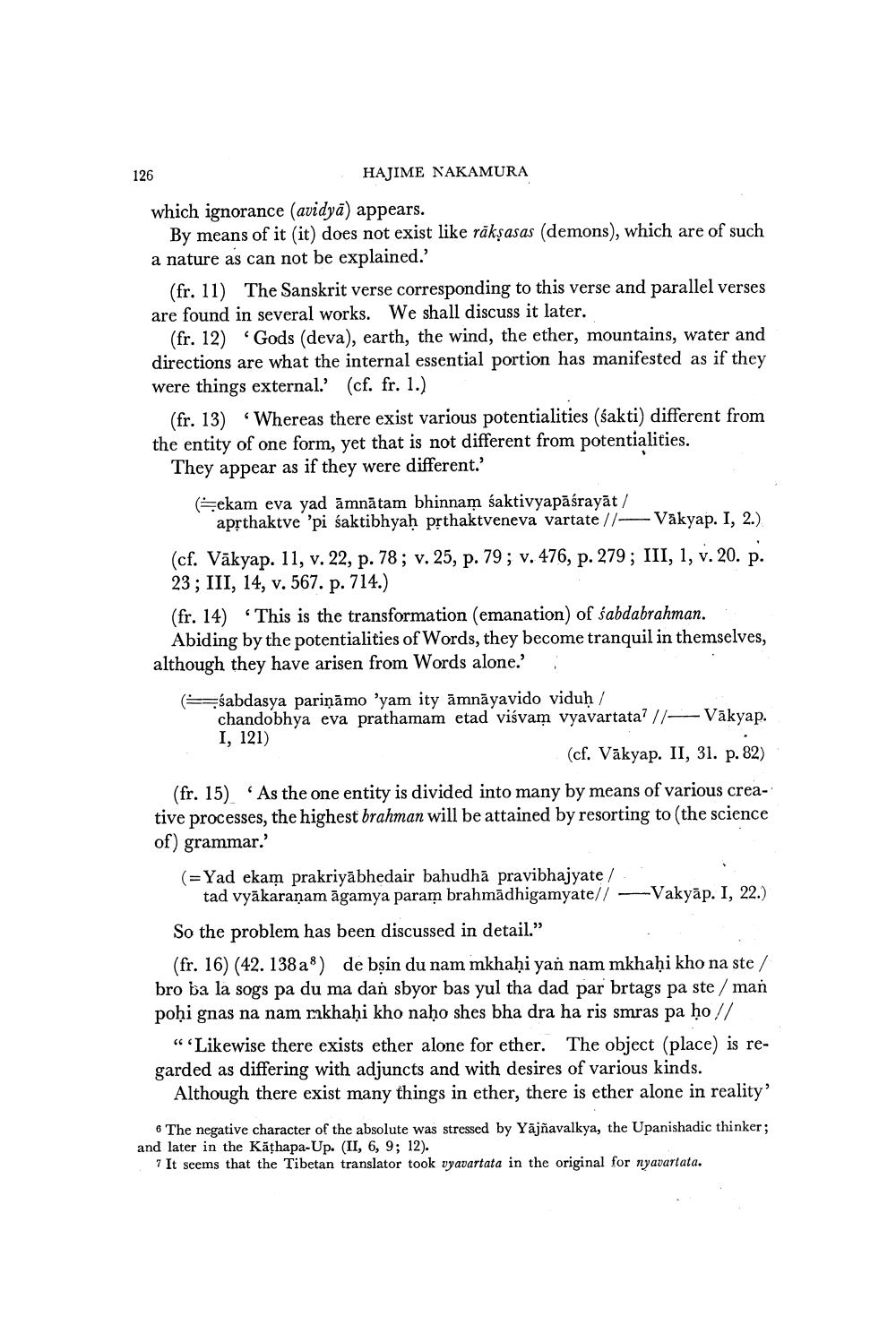________________
126
HAJIME NAKAMURA
which ignorance (avidya) appears.
By means of it (it) does not exist like räkșasas (demons), which are of such a nature as can not be explained.'
(fr. 11) The Sanskrit verse corresponding to this verse and parallel verses are found in several works. We shall discuss it later.
(fr. 12) "Gods (deva), earth, the wind, the ether, mountains, water and directions are what the internal essential portion has manifested as if they were things external.' (cf. fr. 1.)
(fr. 13) Whereas there exist various potentialities (sakti) different from the entity of one form, yet that is not different from potentialities.
They appear as if they were different.'
ekam eva yad amnātam bhinnam śaktivyapāśrayāt /
aprthaktve 'pi śaktibhyah prthaktveneva vartate // Vākyap. I, 2.) (cf. Vākyap. 11, v. 22, p. 78; v. 25, p. 79; v. 476, p. 279; III, 1, v. 20. p. 23; III, 14, v. 567. p. 714.) (fr. 14) "This is the transformation (emanation of sabdabrahman..
Abiding by the potentialities of Words, they become tranquil in themselves, although they have arisen from Words alone.'
( S sabdasya pariņāmo 'yam ity āmnāyavido viduh /
chandobhya eva prathamam etad viśvam vyavartata? // Vākyap. I, 121)
(cf. Vākyap. II, 31. p. 82) (fr. 15) As the one entity is divided into many by means of various creative processes, the highest brahman will be attained by resorting to the science of) grammar. (=Yad ekam prakriyābhedair bahudhā pravibhajyate /
tad vyākaranam āgamya param brahmadhigamyate// Vakyāp. I, 22.) So the problem has been discussed in detail.”
(fr. 16) (42. 138a8) de bşin du nam mkhahi yan nam mkhahi kho na ste / bro ba la sogs pa du ma dan sbyor bas yul tha dad par brtags pa ste / man pohi gnas na nam rakhahi kho naḥo shes bha dra ha ris smras pa ḥo //
“Likewise there exists ether alone for ether. The object (place) is regarded as differing with adjuncts and with desires of various kinds.
Although there exist many things in ether, there is ether alone in reality' 6 The negative character of the absolute was stressed by Yājñavalkya, the Upanishadic thinker; and later in the Kāțhapa-Up. (II, 6, 9; 12).
7 It seems that the Tibetan translator took vyavartata in the original for nyavartata.




